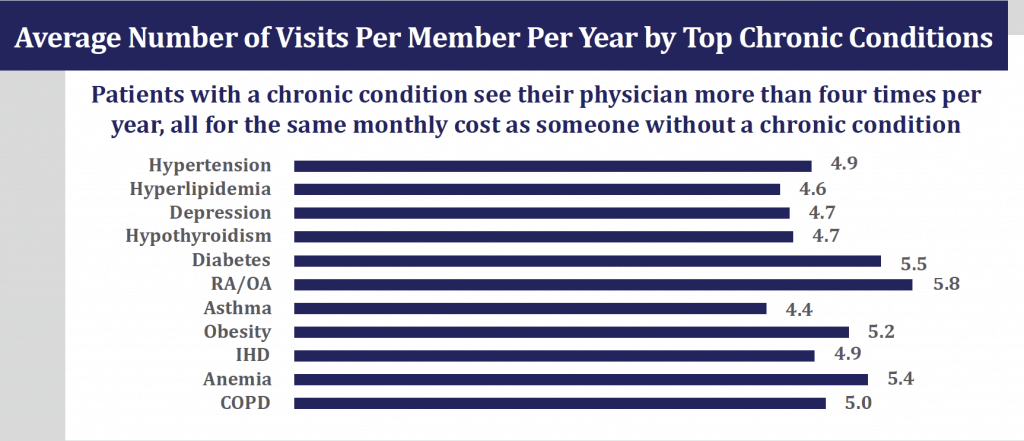- Direct Primary Care Charges a Regular, Periodic Fee
- Direct Primary Care Does Not Bill Third-Parties on a Fee-For-Service Basis
- Direct Primary Care is Not Insurance
- Direct Primary Care Lowers the Cost of Care
- Direct Primary Care Focuses on Preventive Care
- Direct Primary Care Increases Affordability
- Direct Primary Care Increases Accessibility
- Direct Primary Care is Revolutionary
The kids are back to school, leaves are falling and now is the time to muddle through the confusion that is Open Enrollment. Open Enrollment is a limited period of time in the year to find a health insurance plan before needing to prove that you qualify for a Special Enrollment Period or for Medicaid and CHIP.
Even grocery stores such as H-E-B and Wal-Mart are overflowing with offers for health insurance coverage upon entrance of the store right down to the exit doorway. This underscores the importance of health insurance coverage. Uninsured individuals have no safety against catastrophic events. For those who do get manage to get care anyway, it is still exorbitant, as 66% of all bankruptcies are medically related. The costs are only going up, as in the last three years, premiums have increased nearly 70%.
While health insurance is crucial to have, it is not a solution to the high healthcare costs, nor is there guaranteed frequency or quality of healthcare. Direct Primary Care, or DPC, although a new and lesser known model of healthcare delivery, gives benefits that are strong enough reasons for people who are serious about saving on healthcare should consider before Open Enrollment ends.
Three main features make Direct Primary Care or DPC distinct from other health care models. Direct Primary Care charges a regular, periodic fee, does not bill third-party and is not insurance.
1. Direct Primary Care Charges a Regular, Periodic Fee.
Most Americans struggle to provide affordable healthcare for themselves and their families. However, Direct Med Clinic provides an affordable solution. At Direct Med Clinic, for example, the membership fee is only $79 per month, and members pay $0 every visit. In Direct Primary Care, members are charged a regular membership fee that is usually monthly. In some DPC practices, this is the only charge to be seen. In other DPC practices, there may be a small charge for each office visit but this charge is always less than the monthly charge.
Direct Med Clinic offers individual and family plans, full membership, virtual care options, and even telemedicine.
| Primary Care | Urgent Care | Other Benefits of Membership |
| $10 PER VISIT | CONTACT US | |
| Diabetes | Sore & Strep Throat | Virtual Visits Using the App |
| Hypertension | Fever | Walk-In Visits |
| Hyperlipidemia | Earache | Exclusive Access to Pricing for Medications |
| Blood Pressure | Sinus Infections | |
| Cholesterol Management | Cuts | |
| and more… | Sprains | |
| Broken bones | ||
| Back Pain | ||
| and more… |
2. Direct Primary Care Does Not Bill Third-Parties on a Fee-For-Service Basis.
Direct Primary Care does not use a middle man. One of the simple beauties of DPC is the direct relationship between the doctor and the patient. This allows doctors to treat their patients without worrying about if they will be reimbursed for the services they provide. In the traditional fee-for-service model, health care practitioners give itemized charges for every single service performed, incentivizing doctors that give more treatments for more profit. The result is overdiagnosis, overtreatment, and overcharging.
In 2018, a couple took their baby, who had fallen off the bed, to the hospital. The hospital gave the baby formula before he took a nap and then charged the parents $18,836. Over 90% of America’s health care system operates under this fee-for-service model, and 80% of bills overcharge patients due to mistaken billing and general overpricing.
On a membership basis, typically, patients only pay for the cost of supplies if an in-office procedure is involved, plus their regular, standard per-visit cost. Under traditional health care models, patients can be charged just for sitting in the waiting area before seeing their doctor. During hospital procedures in standard facilities, patients are even charged down to the minute.
Direct Med Clinic charges a monthly fee and bills on a month-to-month cycle with a one-year term. These characteristics of DPC also make this model of health care inherently transparent since there are no surprise bills or hidden fees.
3. Direct Primary Care is Not Insurance.
Direct Primary Care clinics do not require insurance for walk-in services or membership. Although insurance can still be combined with DPC, cash-based patients will never be turned away for not having insurance.
In traditional models of health care, special interest groups, including health insurance companies, financially benefit from a corporate model of health care. In many cases, the best interest of the employer comes second to financial gain. Over 60% of personal bankruptcies in the United States are due to unpaid medical bills.
In 2017, a report from Kaiser State Health Facts reported that for public, non-profit and for-profit hospitals, Texas has a higher than average inpatient expense per day compared to other states in the country.
Since health insurance plans can be hard to understand, patients often seek help from independent health insurance brokers to guide and support them in their selection process. Unaware of the commissions and incentives some brokers receive by upselling higher premiums, they do not always choose the best option.

Dr. Moczygemba of Direct Med Clinic, however, believes that many benefits advisors who aren’t seeking commissions embedded within high-cost premiums work well with employers to find the best solution. “You can still be accommodated with the help of knowledgeable brokers who strive to decrease the healthcare expenditure of their clients,” says Dr. Moczygemba. “People can save thousands when our DPC model is placed at the core of a benefits package by a knowledgeable broker who has the best interest of the employer at heart.”
4. Direct Primary Care Lowers the Cost of Care
Direct Primary Care reduces overall healthcare costs. When health insurance companies determine policies, the cost of coverage is based on such factors as location, age, and smoker status of the patient. Health insurance rates vary greatly by state and procedures vary based on coverage.
In 2017, the Rand Corporation found that some Indiana hospitals charge three times more than what they charge Medicare for the exact same procedures.
Anyone can become a Direct Primary Care member and benefit from membership, regardless of location, age and pre-existing conditions or smoking status. In fact, aging patients often benefit more from membership because of the unlimited number of visits they can make to the doctor. Direct Primary Care clinics, such as Direct Med Clinic, often have exclusive access to pricing for prescriptions and affordable options for medication.

Direct Primary Care helps individuals overcome the challenges associated with the factors that influence the cost of health care in traditional models. Patients are aware of costs associated with treatments or visits, regardless of their age, location or pre-existing conditions. This is one example of how Direct Primary Care lowers the costs, adds quality, and increases the value of care.
5. Direct Primary Care Focuses on Preventive Care

6 in 10 American adults have an undiagnosed chronic disease leading to higher ER utilization and health care expenditure.
Another main difference in Direct Primary Care is that DPC focuses on preventive care and health maintenance of the patient. DPC doctors are able to make a significant difference in bettering the population health by assisting with the health management of patients. “With this kind of direct primary care relationship, we’re in a position to decrease not only the immediate cost of managing chronic disease but to also decrease the high cost of hospital claims in the future,” says Dr. Moczygemba. Diabetes management and prevention is highly effective when doctors have greater access to managing the population’s health. Direct Primary Care Clinics around the nation, such as Primary Health Partners from Yukon, OK, are finding that members with chronic conditions go to the doctor more often with membership models and have their diseases managed better, ultimately lowering utilization. Patients with a physical visit showed members with a chronic condition were 32% more likely to see their primary care physician in the last year than the general US population.

A population with a high number of chronic diseases, including diabetes and hypertension, will have workers that need to be treated more often than workers who do not. Bexar County has a higher rate of certain chronic diseases than the rest of Texas that includes diabetes and heart disease, according to the Texas Department of State Health Services Center for Health Statistics. In 2014, 14.2% of Bexar County adults were diagnosed with type 1 or type 2 diabetes, higher than the national average of 9.3%. The number of diabetic amputations in Bexar County has risen in the past two years to 1,909 cases.
The preventive medicine approach through Direct Primary Care makes the doctor’s goal to keep patients out of the emergency room and hospital. Biometric screenings allow doctors to intercept and stave off serious health issues from occurring or growing worse with chronic disease management.
Since DPC clinics charge a regular periodic fee and patients, or members, pay a membership, doctors have more incentives for keeping individuals healthy rather than making a profit from their sickness. Members are kept out of the hospital and emergency room because patients are given treatment with continuity, having the same doctor who manages illnesses before they get out of control. Patients are kept healthy and do not need to rush to an emergency room or hospital when they have an accessible doctor.
6. Direct Primary Care Increases Affordability
1 in 6 Americans is uninsured; however, even those who do have coverage struggle with high out-of-pocket costs. These high costs prevent people from seeking specialty, surgical or, inpatient care in a timely fashion and have less access to affordable medications. The rising out-of-pocket costs, co-payments, and deductibles have increased dramatically, making even a regular doctor’s visit expensive for the average American. As a result, uninsured Americans sometimes visit community health centers and hospital emergency rooms as an alternative for their health care, disrupting the continuity of care. Patients visiting the emergency department for treatable conditions by their primary care physician exacerbate the crisis in the US health care system. Emergency rooms are flooded and overcrowded, doctors spend even less time with patients, and Americans pay more money.

Direct Primary Care increases affordability to a doctor by giving back Americans fair and affordable care. Members are not sent for duplicate tests by different health-care professionals and redundant tests mandated by insurance companies when they have the same primary care provider and trips to the emergency room substantially decrease.
7. Direct Primary Care Increases Accessibility

Direct Primary Care allows a closer patient-doctor relationship. Doctors become more accessible to their patients when they are not limited and controlled with time caps averaging 11 minutes per visit with patients. Doctors are free from the constraints of large healthcare systems that dictate the way in which services are provided. In DPC, doctors are free to leverage technology and incorporate innovative tools such as Telemedicine into their practice. Patients sometimes travel, have time-constraints, or prefer to communicate virtually through text, video or chat about their health. With HIPAA compliant apps, such as Spruce, patients see that technology through text messages have the power to improve health outcomes. When members are referred to specialists, medical records and test results are not at risk of reaching doctors late for surgeries and appointments because doctors are accessible and communication is regular. The increase in accessibility leads to a stronger doctor-patient relationship where patients see continuous care and develop trust with their primary care physician whom they can see regularly.
8. Direct Primary Care is Revolutionary
The Direct Primary Care model, endorsed by the AAFP, encourages healthcare practitioners to challenge the status quo by prioritizing the doctor-patient relationship and preventive care over profit-driven medicine. Focusing on preventive care through Direct Primary Care makes the patient visit more efficient. It lowers health costs, gives patients more time with doctors, adding quality and value to their patient experience. The results of beings treated under Direct Primary Care means that there are better health outcomes due to preventive care encouraging a continuous, ongoing relationship with the doctor, lower costs as there are no hidden fees or surprise bills, and enhanced patient experience, with the ability to contact your personal health care practitioners through HIPAA compliant telemedicine tools. These are the primary characteristics of Direct Primary Care that make this truly a revolutionary healthcare model. To sign up for a membership with Direct Med Clinic today, contact 210-981-4903. Available for open enrollment!


Recent Comments